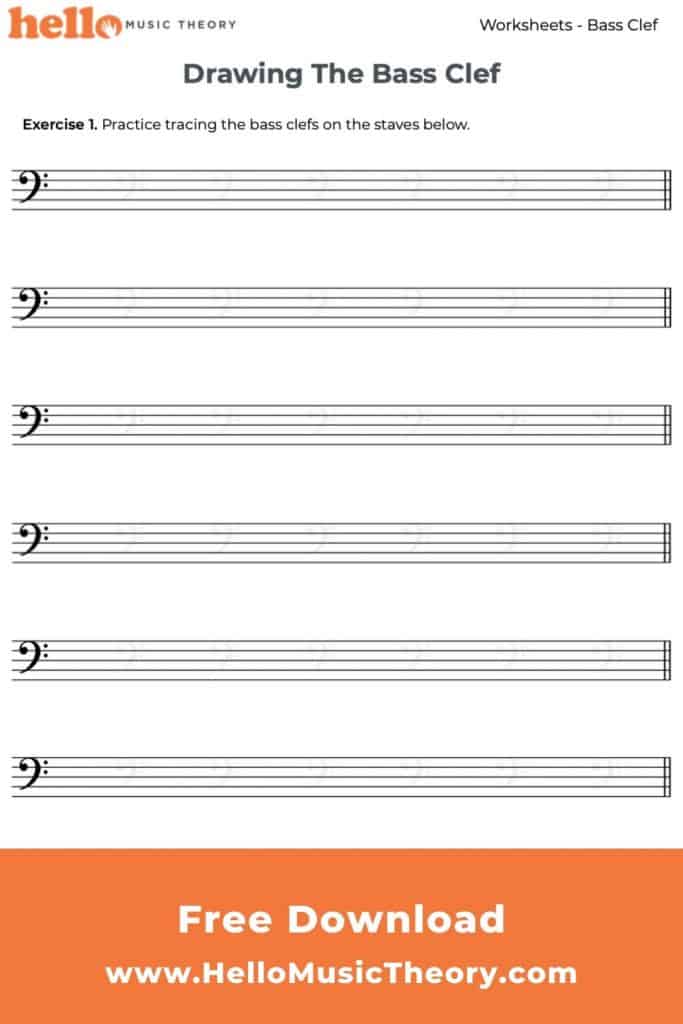If you play an instrument that’s at a lower pitch, then you’re probably already familiar with the bass clef. However, for those that don’t, it can be a little confusing.
In this post, we’ll cover how to draw a bass clef on a staff, or stave, and at the end, we have a free worksheet to print out and practice. But first…
What Is A Bass Clef?
The bass clef is a type of clef in music, which is how we notate the pitch of notes.
The bass clef is also known as the F clef, as it shows us where the note F is on a staff.

It’s used by loads of instruments that play in a low register. Instruments like the double bass, bassoons, and tubas all use the bass clef.
Why Do You Need To Draw It Properly?
We covered earlier how the bass clef is a type of F clef. This means they show us where the note F is on the stave.
It’s really important to place the bass clef in the right position; otherwise, you’ll actually be drawing a different clef.
For instance, if you drew an F clef as shown below, you’d actually be drawing a baritone clef.

Drawing The Bass Clef
Now we’ll cover how you actually draw a bass clef.
Unlike drawing a treble clef (where there are a couple of different ways), most people draw the bass clef in the same way.
Here’s a video explaining how.
- Start with your pencil on the fourth line of the staff (F).
- Draw a curved line clockwise up to the top line of the staff (A).
- Curve down and diagonally across the staff, finishing on or just above the first line of the staff (G).
- Draw two dots on either side of the fourth line of the staff (F).
Drawing Bass Clef Practice Worksheet
Like most things, one of the best ways to learn how to do something is to practice it. To help, we’ve got a free bass clef drawing worksheet that you can download below.
Click here to download our free drawing bass clef worksheet.




